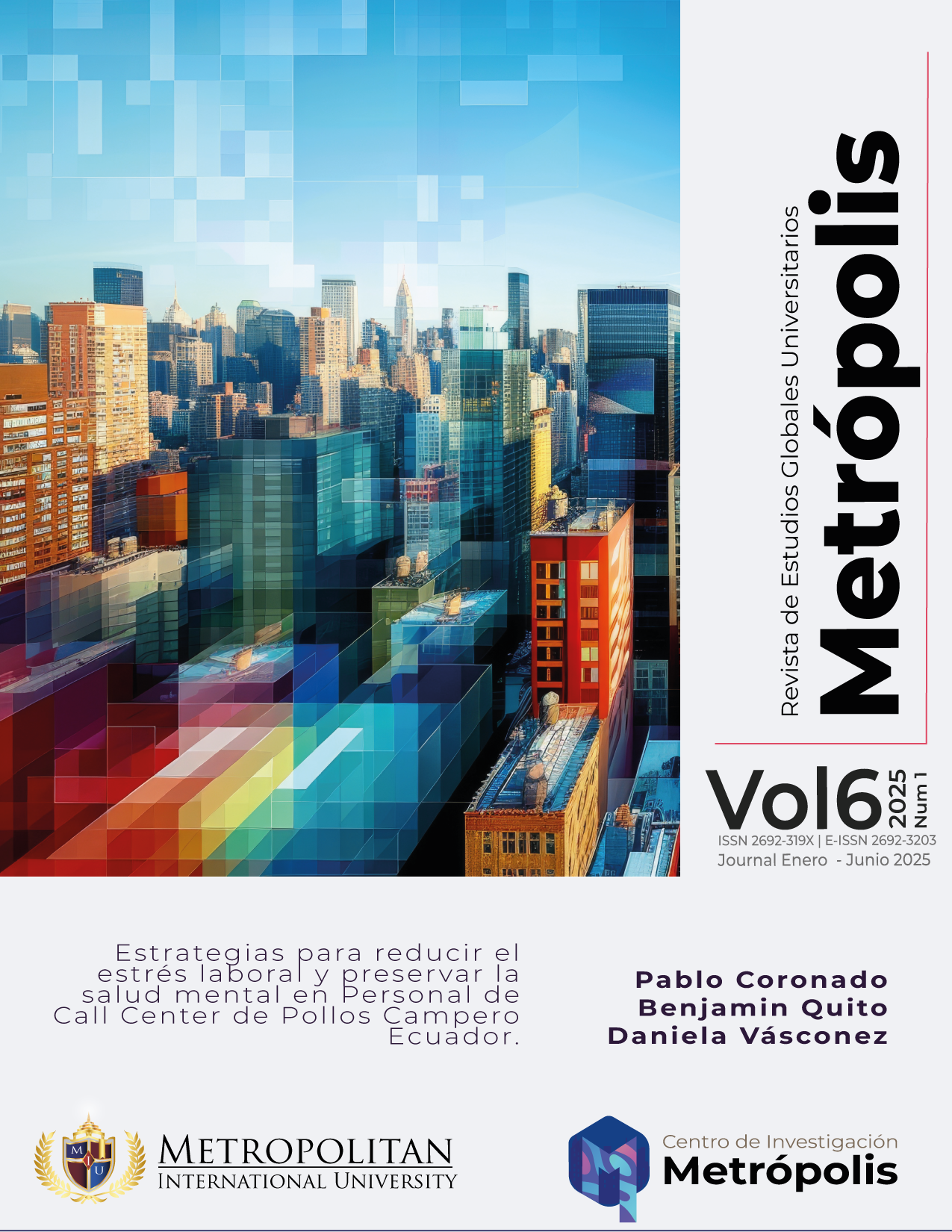Strategies to reduce work stress and preserve mental health in Pollos Campero Ecuador Call Center Personnel.
Keywords:
Work stress, Mental health, Call Center, Intervention Strategies, Workplaces well-beingAbstract
Work-related stress in call centers presents a significant risk affecting most telephone operators in these environments. It is essential to investigate the frequency of stressors and the symptoms associated with stress, as this issue directly impacts workers' mental health. The aim of this study is to identify the main sources of work-related stress and analyze effective strategies to reduce it, in order to preserve mental well-being. To conduct the study, a quantitative method was employed, and surveys were administered to 16 telephone operators from Pollos Campero Ecuador, utilizing the Work Stress Questionnaire developed by Health, Safety, and Environment. The results revealed that stress manifested due to pressure to meet performance targets, constant management of difficult customer interactions, and a lack of control over their work environment. High levels of perceived stress were identified, suggesting vulnerability to mental health issues.The conclusion of the research emphasizes that work-related stress is multifaceted, indicating that in this specific case within a call center, it is not a simple or one-dimensional phenomenon. It can have multiple causes, manifestations, and effects that impact operators in various ways, linked to working conditions, interpersonal relationships, expectations, demands, and the repetitive nature of tasks. It is crucial for the company to implement effective strategies that promote a healthy work environment. By addressing these stressors and fostering a supportive atmosphere, organizations can help mitigate the negative effects of stress on their employees, ultimately leading to improved job satisfaction, enhanced overall mental health, and increased productivity, especially in high-pressure situations.

Downloads
Published
How to Cite
Issue
Section
License

This work is licensed under a Creative Commons Attribution-NonCommercial-ShareAlike 4.0 International License.



